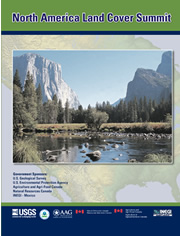Public servant, travel and tourism scholar, and geographer Voit Gilmore died October 15, 2006. Gilmore was born October 13, 1918, in Winston-Salem, North Carolina. He graduated Phi Beta Kappa in 1939 with degrees in journalism and political science from the University of North Carolina at Chapel Hill, where years later he earned a master’s degree and a doctorate in geography.
Gilmore’s early career included a job with Pan American Airlines and two years in the U.S. Navy. After World War II, he moved to Southern Pines, North Carolina where he founded Four Seasons Travel Service.
Gilmore served as president of several organizations including the American Society of Travel Agents, the American Forestry Association, and the North Carolina Forestry Association (he operated his family’s lumber manufacturing business from 1947-61).
Gilmore also served as mayor of Southern Pines, North Carolina, as a state senator for two terms, and in a variety of capacities for four North Carolina governors. He was the first director of the U.S. Travel Service, forerunner to the U.S. Travel and Tourism Administration, a post he held during the Kennedy and Johnson administrations.
Over the years, he served as a correspondent from Vietnam, the Arctic and Antarctic for a group of North Carolina newspapers.
In 2000, he and his former wife, Kathryn McNeil, donated more than 500 acres of land and buildings at Purchase Knob to the Great Smoky Mountains National Park. The gift became the Appalachian Highland Science Learning Center, one of only five such educational centers in the National Park System, with more than 5,000 students participating each year.
Gilmore was a life fellow of the Royal Geographic Society of London, a recipient of the “Mr. Travel” Award from the Golden Helm Society of World Travel Leaders and a member of the Travel Association Hall of Leaders.
In 2004 Gilmore received North Carolina’s highest honor, the North Carolina Award for Public Service, an annual presentation to those who have made significant contributions in science, literature, fine arts and public service.
He established the Voit Gilmore Distinguished Professorship in Geography and the John D. Eyre Geography Travel Fund at the University of North Carolina at Chapel Hill.
Voit Gilmore (Necrology). 2006. AAG Newsletter 41(10): 23.
